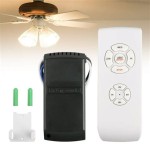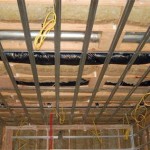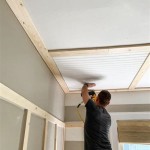Mobile Home Ceiling Replacement Ideas
Mobile homes offer a cost-effective and customizable housing option, but their ceilings can often feel cramped or outdated. Replacing your mobile home ceiling can transform its appearance, improve insulation, and enhance your overall living experience.
Before embarking on your ceiling replacement project, it's crucial to assess the condition of your existing ceiling. If there are any signs of water damage, mold, or sagging, it's essential to address these issues before proceeding with the replacement. Additionally, consider the height of your current ceiling; if it's too low, you may want to explore raising it during the replacement process.
When choosing a new ceiling material for your mobile home, several options are available, each with its own advantages and disadvantages:
- Drywall: Drywall is a popular option for mobile home ceilings as it is relatively inexpensive, fire-resistant, and offers a smooth, finished look. However, it requires additional framing and can be more susceptible to damage from water and moisture.
- Tongue and Groove Paneling: Tongue and groove paneling offers a rustic and charming aesthetic. It is durable, easy to install, and provides good insulation. However, it can be more expensive than drywall and may require more maintenance.
- Ceiling Tiles: Ceiling tiles are a cost-effective and versatile option. They are made from various materials, including vinyl, fiberglass, and metal, and come in a range of colors and textures. Ceiling tiles are easy to install and replace, making them a good choice for DIY projects.
- Vaulted Ceilings: If you want to create a more spacious feel in your mobile home, consider installing a vaulted ceiling. Vaulted ceilings extend upward to a peak, creating a sense of height and openness. However, they can be more complex and expensive to install than traditional flat ceilings.
Once you have selected a ceiling material, it's time to plan the replacement process. It is recommended to hire a professional contractor to ensure the project is completed safely and efficiently. However, if you are confident in your DIY skills, you can tackle the replacement yourself.
The following steps provide a general overview of the mobile home ceiling replacement process:
- Remove the existing ceiling: Carefully remove the existing ceiling, using appropriate tools and safety precautions. If there is any insulation, it should also be removed and replaced with new material.
- Install new framing (if necessary): If your new ceiling material requires additional framing, such as drywall, it will need to be installed before the ceiling can be attached.
- Attach the new ceiling: Depending on the material you have chosen, the installation process will vary. Drywall is typically screwed or nailed into place, while tongue and groove paneling is slotted together. Ceiling tiles are usually glued or stapled to the ceiling joists.
- Finish the ceiling: Once the new ceiling is installed, it may require additional finishing, such as taping and mudding for drywall, painting or staining for tongue and groove paneling, or grouting for ceiling tiles.
By following these steps, you can successfully replace your mobile home ceiling and transform the look and feel of your living space. With careful planning and execution, you can create a ceiling that meets your aesthetic preferences, improves the comfort and insulation of your home, and adds value to your property.

Upgrading And Installing Mobile Home Ceiling Ideas Trusscore

Upgrading And Installing Mobile Home Ceiling Ideas Trusscore

10 Materials To Replace Your Mobile Home Ceilings Living

10 Materials To Replace Your Mobile Home Ceilings Living

How Can You Fix A Mobile Home Ceiling Hometalk

10 Materials To Replace Your Mobile Home Ceilings Living

Watch This Before You Renovate A Mobile Home Ceiling Attic And Roof Youtube

Mobile Home Ceiling Replacement Ideas

10 Materials To Replace Your Mobile Home Ceilings Living

How To Repair And Replace Ceiling Panels For Mobile Homes The Home Dealer








